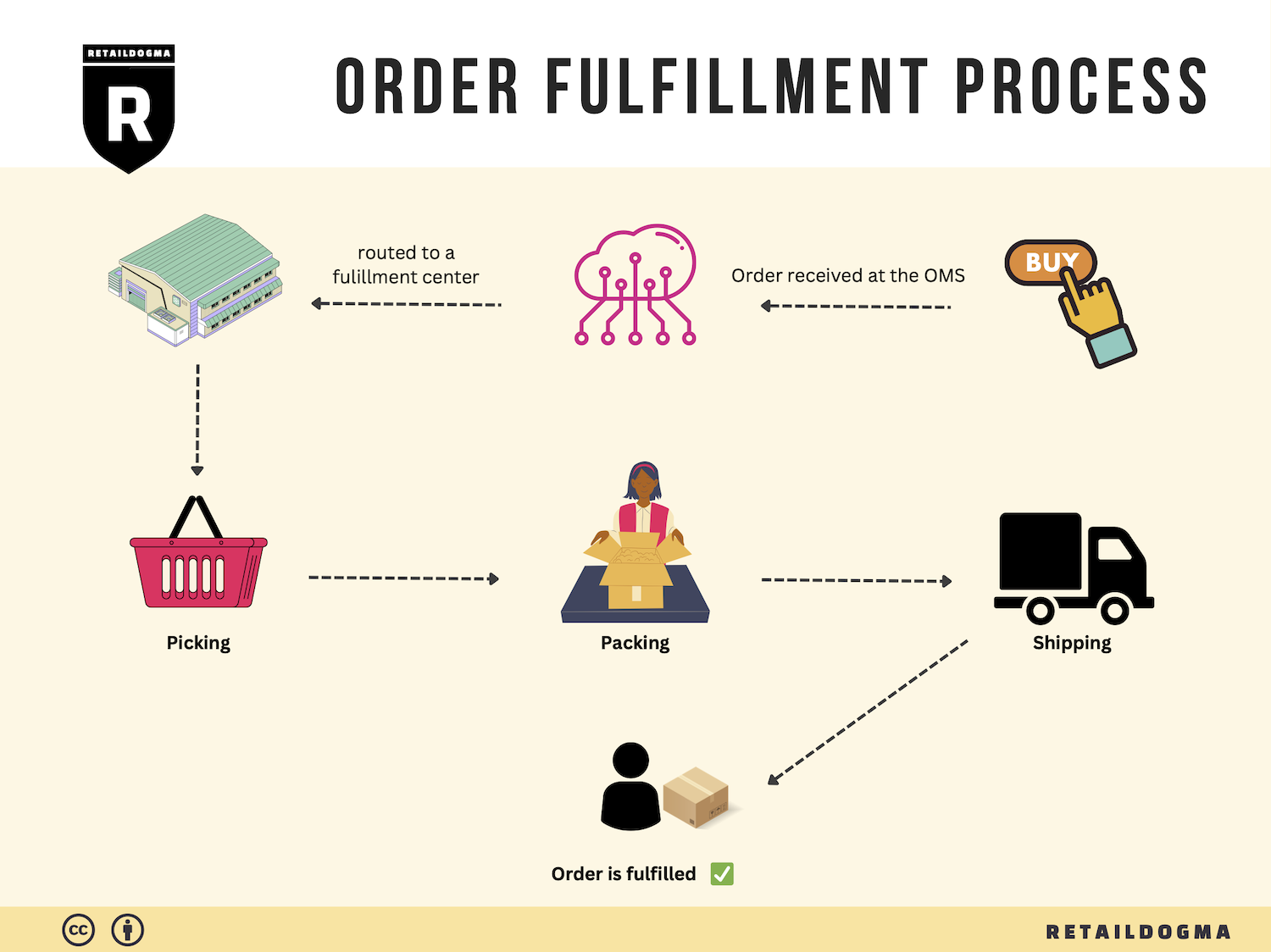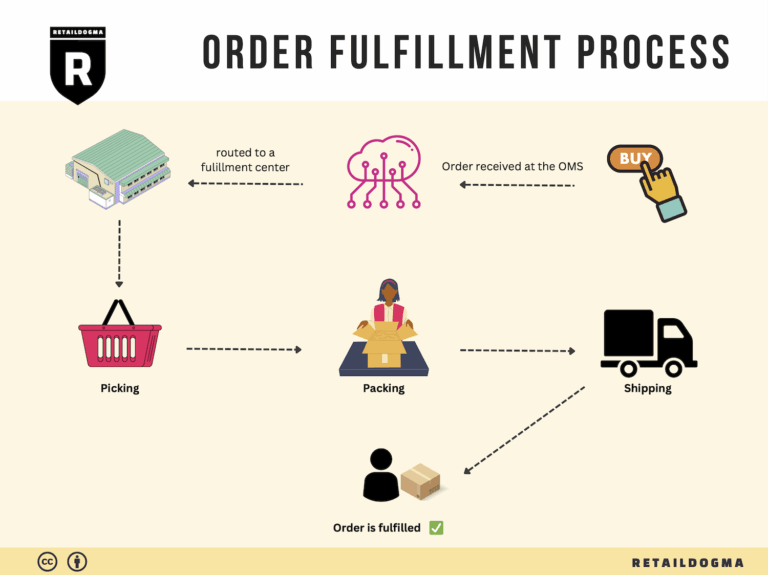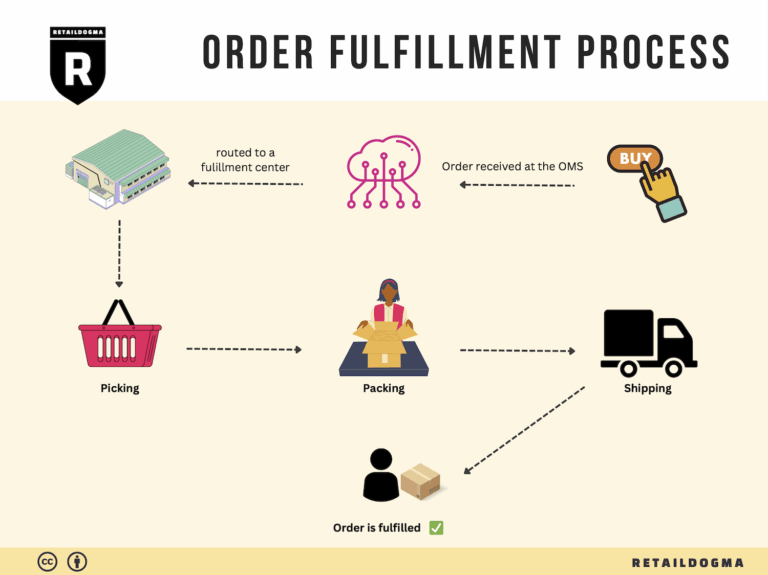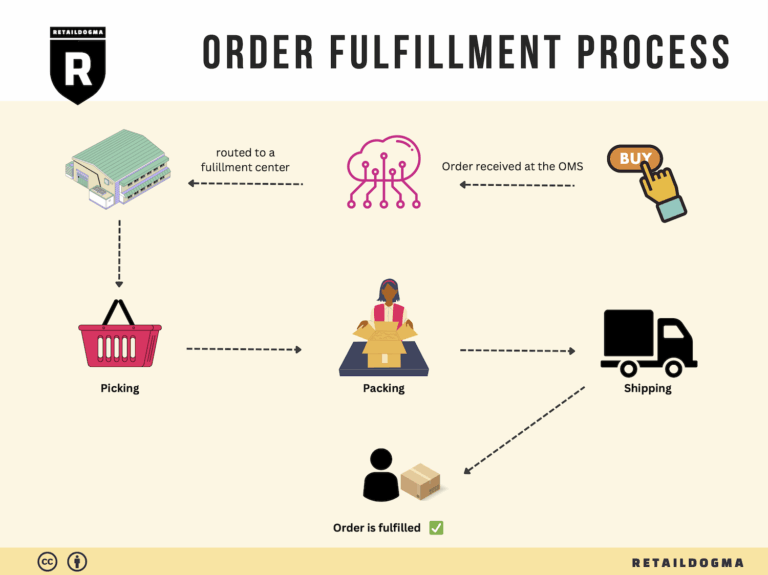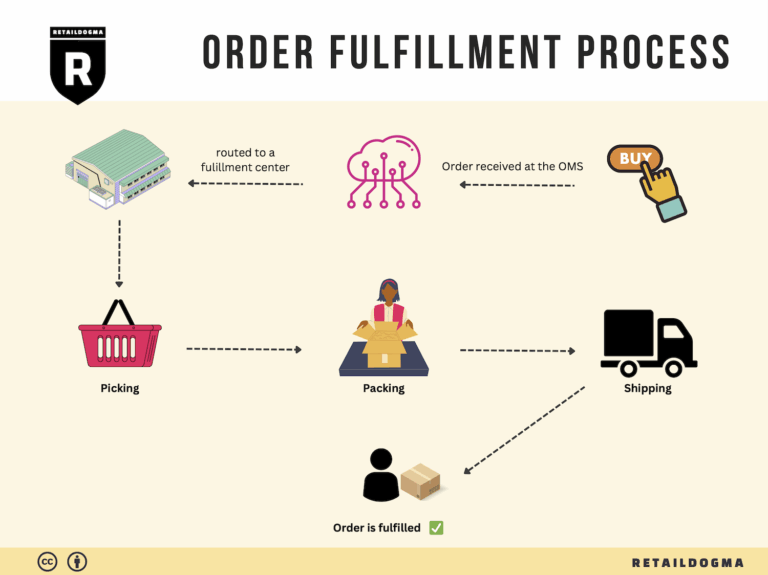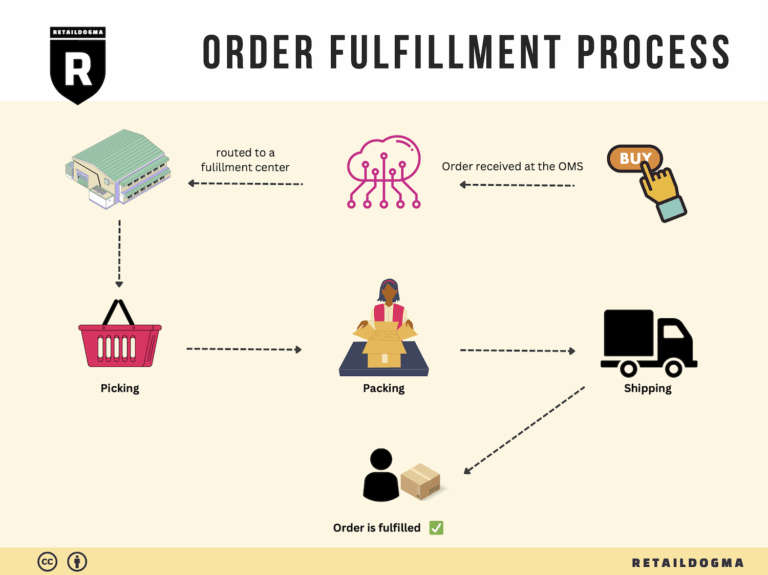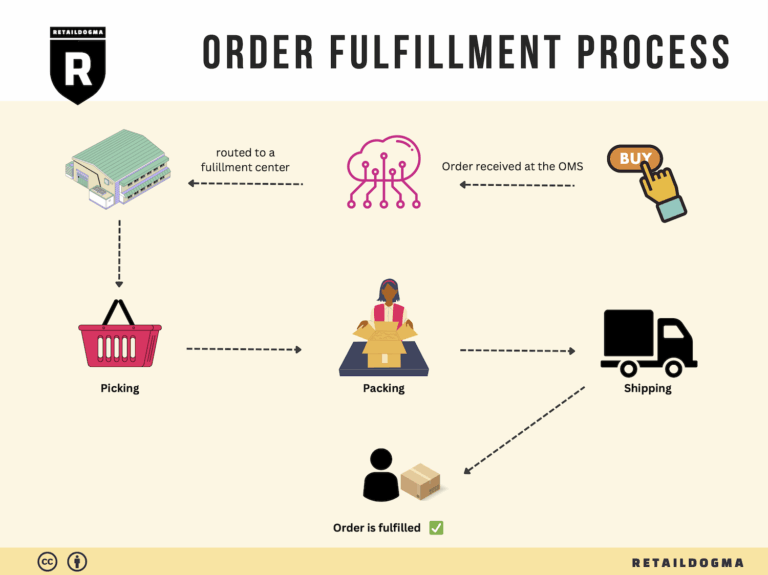How Order Fulfillment Works: A Step-by-Step Guide for Businesses
What is E-commerce Fulfillment? An Introduction for Growing Businesses
Understanding E-commerce Fulfillment: A Key to Scaling Your Business
As an e-commerce business owner, you’re likely familiar with the growing pains that come with success. One of the most common challenges is managing the packing and shipping of orders as your sales volume increases. The excitement of making sales can quickly turn into overwhelming stress when you find yourself swamped with logistics. This is where e-commerce fulfillment comes into play.
Fulfillment is the process of getting a product from your inventory to your customer’s doorstep. It encompasses everything from receiving inventory and storing products to picking, packing, and shipping orders. Efficient fulfillment is essential for maintaining customer satisfaction and ensuring that your business runs smoothly as it scales. However, choosing the right fulfillment strategy can be daunting, especially with various options available.
In this guide, we will explore the different fulfillment models available to growing businesses, including Third-Party Logistics (3PL) and Fulfillment by Amazon (FBA). Each model has its own advantages and considerations, and understanding these will help you determine which solution aligns best with your business goals.
We will also delve into core fulfillment services that every business should consider, such as inventory management, order processing, shipping, and returns handling. Understanding these components will allow you to identify what services you need and how they can improve your operational efficiency.
Choosing a fulfillment partner is another critical step in the process. We’ll provide practical tips on what to look for in a partner, including technology capabilities, scalability, and customer service. Making an informed decision can significantly impact your business’s growth trajectory.
Finally, pricing is a crucial aspect of e-commerce fulfillment that can affect your bottom line. We’ll break down the various costs associated with different fulfillment models and provide insights on how to calculate these expenses to ensure your operations remain profitable.
The goal of this guide is to empower you with the knowledge and tools necessary to make smart decisions about your logistics. By understanding the ins and outs of e-commerce fulfillment, you can streamline your operations, enhance customer satisfaction, and focus on what you do best—growing your business.
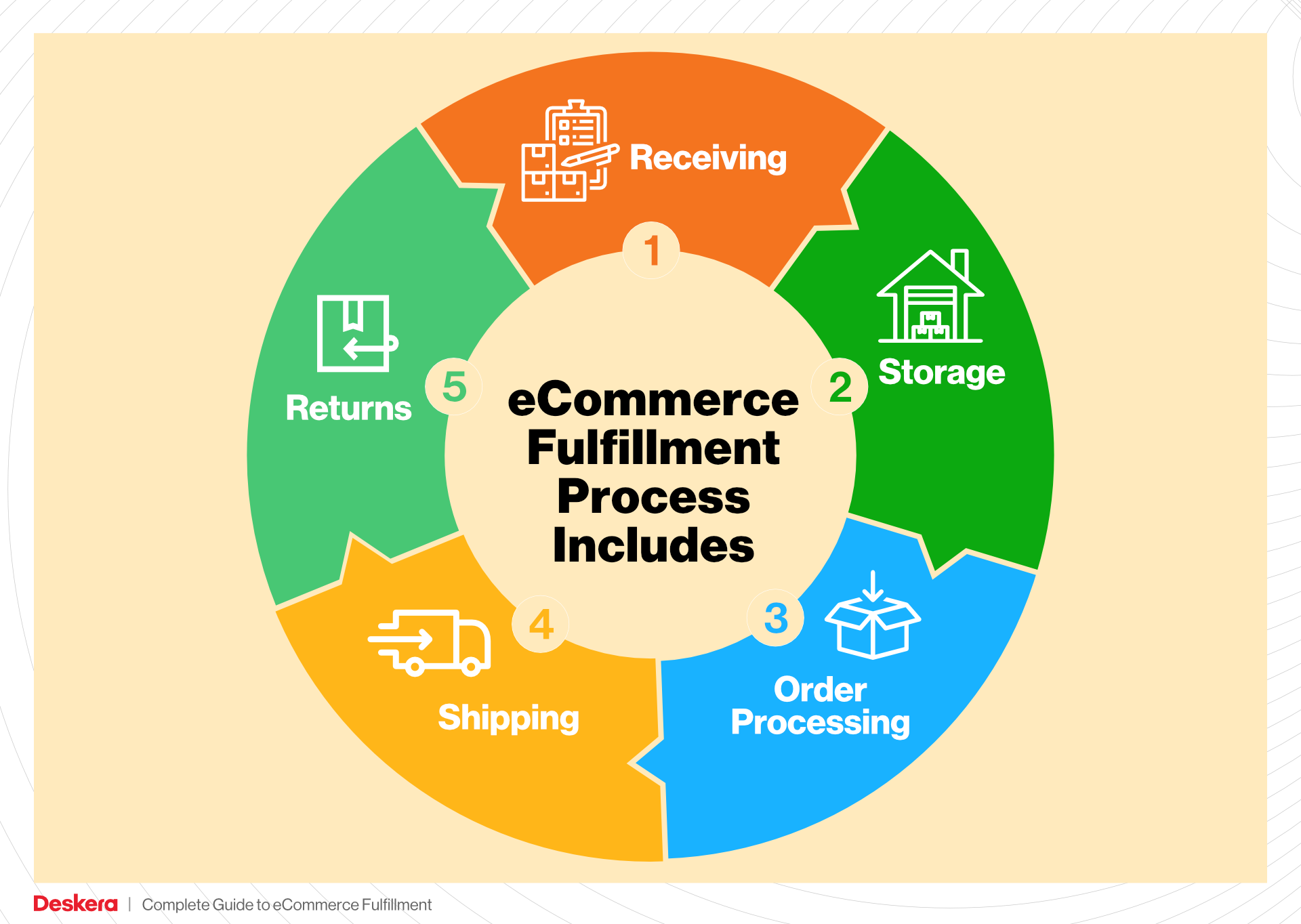
What You’ll Learn In This Guide
- What is E-commerce Fulfillment? An Introduction for Growing Businesses
- The Order Fulfillment Process: From ‘Buy’ Button to Customer’s Door
- Comparing Fulfillment Models: In-House vs. 3PL vs. Dropshipping
- A Deep Dive into Amazon FBA: Pros, Cons, and Who It’s For
- Core Services Offered by Fulfillment Centers
- How to Choose a Fulfillment Partner: A 6-Point Checklist
- Understanding Fulfillment Pricing: A Breakdown of Common Fees
- Frequently Asked Questions (FAQs) about Fulfillment
- Conclusion: Is Outsourcing Fulfillment the Right Move for Your Business?
- Important Disclaimer
The Order Fulfillment Process: From ‘Buy’ Button to Customer’s Door
1. Receiving Inventory
The order fulfillment process begins with receiving inventory at the fulfillment center. When products arrive from suppliers or sellers, they undergo a thorough inspection to ensure quality and accuracy. Each item is scanned and logged into the inventory management system, often using a Stock Keeping Unit (SKU) system, which uniquely identifies each product.
Importance: Proper inventory receiving is critical as it sets the stage for the entire fulfillment process. Errors in this step can lead to stock discrepancies, which may affect order accuracy and customer satisfaction. A well-executed receiving process ensures that products are accounted for, reducing the risk of stockouts and overstock situations.
Key Term: SKU (Stock Keeping Unit) – A unique identifier for each product that facilitates tracking and inventory management.
2. Warehouse Storage
Once the inventory has been received and checked, it is strategically stored in the warehouse. Amazon employs an innovative system known as “chaotic storage,” where items are placed in any available space rather than being grouped by category. This method maximizes storage efficiency and allows for quicker retrieval of products.
Importance: Effective warehouse storage is crucial for maintaining an organized inventory and ensuring quick access to products during the order picking phase. By utilizing advanced inventory management systems, businesses can track the location of each item in real-time, which is essential for operational efficiency.
Key Term: Chaotic Storage – A storage methodology that places items in available space, enhancing flexibility and efficiency in inventory management.
3. Order Picking
When a customer places an order, the fulfillment center activates the order picking process. The system generates a pick list, which outlines the items to be retrieved and their respective locations within the warehouse. Workers or autonomous robots then navigate the warehouse to collect these items efficiently.
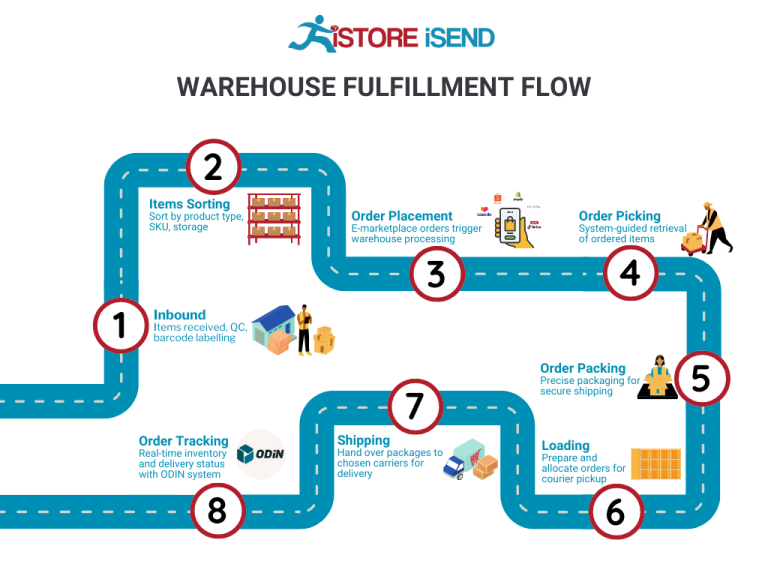
Importance: Order picking is a pivotal step in the fulfillment process as it directly impacts order accuracy and speed. The efficiency of this step can significantly influence customer satisfaction, especially in e-commerce, where rapid delivery is often expected. Optimizing the picking process can lead to reduced labor costs and increased throughput.
Key Term: Pick List – A document or digital record that details the items to be collected for fulfilling customer orders.
4. Order Packing
After the items have been picked, they move to the packing station. Here, products are carefully packed into boxes, with algorithms often used to determine the optimal box size for each order, minimizing packing materials and shipping costs. Items are then labeled for shipping, ensuring they are ready for the next stage.
Importance: Packing is essential for protecting products during transit and ensuring they arrive in perfect condition. Efficient packing processes can reduce shipping costs and improve overall order accuracy. A well-packaged order also enhances the customer experience, reinforcing the brand’s reputation for quality.
Key Term: Packing Algorithms – Software tools that calculate the best packing methods and box sizes to optimize space and reduce shipping costs.

5. Shipping & Delivery
The final step in the order fulfillment process is shipping and delivery. Once packed, orders are sorted based on their destination and handed over to shipping carriers for delivery. Fulfillment centers often work closely with various logistics partners to ensure timely shipping. Advanced tracking systems allow both businesses and customers to monitor the shipment’s progress.
Importance: This step is vital for customer satisfaction, as timely delivery is a key factor in the overall shopping experience. Efficient shipping processes can help businesses maintain a competitive edge in the e-commerce landscape. Additionally, effective returns handling is an essential part of this phase, as it allows customers to return products seamlessly if needed.
Key Term: Last-Mile Delivery – The final step of the shipping process, where the package is delivered from a distribution center to the customer’s doorstep, often representing a significant portion of shipping costs.
By mastering these five steps, e-commerce businesses can streamline their order fulfillment processes, improve operational efficiency, and enhance customer satisfaction, ultimately driving growth and scalability in their operations.
Comparing Fulfillment Models: In-House vs. 3PL vs. Dropshipping
Fulfillment Model Comparison Table
| Model | Who Handles Inventory | Best For (Business Stage) | Key Advantage | Key Disadvantage |
|---|---|---|---|---|
| In-House Fulfillment | The business itself | Established businesses with stable demand | Greater control over inventory and operations | High overhead costs and resource requirements |
| Third-Party Logistics (3PL) | An external logistics provider | Growing businesses looking to scale | Flexibility and access to expertise and technology | Less control over inventory and potential service variability |
| Dropshipping | Suppliers or manufacturers | Startups and small businesses | Low upfront investment and reduced risk | Lower profit margins and less control over shipping times |
In-House Fulfillment
In-house fulfillment refers to the process where a business manages its own inventory and order fulfillment operations. This model is ideal for established companies that have a stable and predictable demand for their products. By handling inventory internally, businesses can maintain greater control over their logistics processes, ensuring that they can implement specific quality standards and respond quickly to customer needs. In-house fulfillment allows for customized packaging and branding, enhancing the customer experience. However, this model comes with significant drawbacks, including high overhead costs associated with warehousing, staffing, and maintaining inventory management systems. Businesses must also invest in technology and training to optimize operations. For many, the capital expenditure required can be a barrier, especially if demand fluctuates.
Third-Party Logistics (3PL)
Third-party logistics (3PL) involves outsourcing the logistics and fulfillment operations to an external provider. This model is particularly beneficial for growing businesses that want to scale operations without the burden of managing logistics themselves. 3PL providers offer a wide range of services, including warehousing, inventory management, order processing, and shipping. By leveraging the expertise and technology of 3PL providers, businesses can access advanced logistics solutions that may be prohibitively expensive to implement in-house. Additionally, 3PL allows businesses to focus on their core competencies, such as marketing and product development, while leaving the complexities of logistics to specialists. However, businesses must be mindful of the potential downsides, including reduced control over inventory and the possibility of service variability. Selecting a reliable 3PL partner is crucial, as any lapses in service can directly impact customer satisfaction.
Dropshipping
Dropshipping is a fulfillment method where the retailer does not keep the products it sells in stock. Instead, when a customer makes a purchase, the retailer purchases the item from a third-party supplier who then ships it directly to the customer. This model is particularly attractive for startups and small businesses with limited capital, as it requires minimal upfront investment in inventory. Dropshipping allows entrepreneurs to offer a wide range of products without the risk of unsold inventory, making it a low-risk way to enter the e-commerce space. However, dropshipping comes with its own set of challenges. Profit margins can be lower compared to other fulfillment methods, as retailers must pay a markup to suppliers. Additionally, businesses have less control over shipping times and product quality, which can lead to customer dissatisfaction. Effective communication with suppliers and careful selection of product offerings are critical for success in this model.
Conclusion
Each fulfillment model presents unique advantages and disadvantages, and the right choice depends on the specific needs and stage of a business. In-house fulfillment offers control but requires significant investment, while 3PL provides flexibility and expertise at the cost of some control. Dropshipping minimizes risk and investment, but at the expense of margins and control over customer experience. As e-commerce continues to evolve, understanding these models will be essential for business owners and operations managers looking to scale effectively.
A Deep Dive into Amazon FBA: Pros, Cons, and Who It’s For
Understanding Fulfillment by Amazon (FBA)
Fulfillment by Amazon (FBA) is a service provided by Amazon that allows sellers to store their products in Amazon’s fulfillment centers. Amazon then takes care of storage, packaging, shipping, and customer service for these products. This service has become a cornerstone for many e-commerce businesses, offering a streamlined approach to logistics and customer fulfillment.
How FBA Works
-
Setup: Sellers sign up for an Amazon Seller account and select FBA as their fulfillment method. They then prepare their products according to Amazon’s guidelines.
-
Shipping to Fulfillment Centers: Sellers send their products to Amazon’s fulfillment centers. Amazon has numerous fulfillment centers across the globe, allowing for strategic placement of inventory to optimize shipping times.
-
Storage: Once the products arrive at the fulfillment center, they are stored in Amazon’s warehouses. The items are tracked in real-time through Amazon’s sophisticated inventory management system.
-
Order Processing: When a customer places an order for a product, Amazon handles the entire process. This includes picking the item from the shelf, packing it, and shipping it directly to the customer.
-
Customer Service and Returns: Amazon also manages customer service inquiries and handles returns for FBA products, providing a seamless experience for both sellers and customers.
-
Prime Eligibility: Products fulfilled through FBA are eligible for Amazon Prime, which attracts a vast customer base looking for fast shipping options.
Pros of Fulfillment by Amazon (FBA)
-
Prime Eligibility: FBA products are automatically eligible for Amazon Prime, which can significantly increase sales. Prime members are more likely to purchase items that offer fast shipping.
-
Customer Trust: Amazon’s reputation for reliability extends to FBA sellers. Customers often prefer buying from FBA sellers because they trust Amazon’s fulfillment process, which includes efficient shipping and excellent customer service.
-
Multi-Channel Fulfillment: FBA allows sellers to fulfill orders not only from Amazon but also from other sales channels, such as their own websites or other e-commerce platforms. This flexibility can help expand a seller’s reach and streamline logistics.
-
Scalability: FBA offers a scalable solution for growing businesses. As sales increase, sellers can rely on Amazon’s infrastructure to handle larger volumes without needing to invest in additional logistics capabilities.
-
Time-Saving: By outsourcing fulfillment to Amazon, sellers can focus on other critical aspects of their business, such as marketing and product development, rather than logistics.
Cons of Fulfillment by Amazon (FBA)
-
High Fees: FBA comes with various fees, including storage fees for inventory held in fulfillment centers and fulfillment fees for each order processed. These costs can add up and eat into profit margins, especially for low-cost items.
-
Strict Inventory Rules: Amazon has stringent requirements for inventory management. Sellers must adhere to specific guidelines regarding packaging, labeling, and shipping to avoid penalties or issues with their accounts.
-
Commingling Risks: FBA products may be commingled with inventory from other sellers. This means that if a customer receives a damaged or defective item, it could potentially harm the seller’s reputation, even if the seller’s product was not the source of the issue.
-
Loss of Control: By relying on Amazon for fulfillment, sellers relinquish some control over their inventory and customer experience. This can be challenging for brands that prioritize unique packaging or personalized service.
-
Inventory Limitations: Amazon imposes storage limits on sellers based on their sales history and performance metrics. This can restrict a seller’s ability to stock inventory, particularly during peak selling seasons.
Who is FBA Best For?
Fulfillment by Amazon is an excellent option for a variety of sellers, but it is particularly beneficial for:
-
Small to Medium-Sized E-commerce Businesses: Sellers looking to scale quickly can take advantage of Amazon’s vast logistics network without needing to invest heavily in their own fulfillment operations.
-
Brands Seeking Exposure: New brands or products that want to gain visibility on Amazon can benefit from the trust and efficiency associated with FBA, helping them compete with established sellers.
-
Sellers of High-Volume Products: Businesses with high sales volumes can leverage FBA’s efficiency to manage fulfillment more effectively and reduce the burden of logistics.
-
Multi-Channel Sellers: Companies that sell across various platforms and want to streamline their fulfillment processes will find FBA advantageous, as it supports multi-channel fulfillment.
-
Seasonal Sellers: Businesses that experience seasonal spikes in sales can use FBA to manage inventory without worrying about the logistics of storage and shipping during peak times.
In conclusion, Fulfillment by Amazon offers a powerful solution for e-commerce businesses looking to enhance their fulfillment processes and scale their operations. While it presents some challenges, particularly regarding fees and inventory management, the benefits often outweigh the drawbacks, especially for sellers who are strategic about their approach.
Core Services Offered by Fulfillment Centers
Inventory Management & Warehousing
Inventory management and warehousing are fundamental services provided by fulfillment centers that ensure efficient storage, tracking, and retrieval of products. In a typical fulfillment center, a wide range of products from both Amazon and third-party sellers are stored using advanced inventory systems. This includes a method known as chaotic storage, which allows items to be stored in any available space rather than clustering similar products together.
Benefits:
1. Optimized Space Utilization: By utilizing chaotic storage, fulfillment centers can maximize the use of available space, leading to increased capacity without the need for additional warehousing.
2. Real-Time Tracking: Advanced inventory management systems enable businesses to track stock levels in real-time, reducing the risk of stockouts or overstock situations.
3. Improved Order Accuracy: With precise inventory tracking, fulfillment centers can ensure that the right items are picked for orders, minimizing errors and enhancing customer satisfaction.
4. Scalability: As e-commerce businesses grow, fulfillment centers can easily adjust their storage capacity to accommodate increased inventory without major operational changes.
Pick and Pack Services
Pick and pack services are crucial for the order fulfillment process. When a customer places an order, fulfillment centers utilize efficient picking systems to locate and retrieve the ordered items. This process can involve human workers or automated systems, such as robots, that bring items to pickers. Once the items are gathered, they are packed into boxes for shipping.
Benefits:
1. Speed and Efficiency: Fulfillment centers are designed to process orders quickly, often completing order fulfillment within hours. This rapid turnaround is vital for maintaining customer satisfaction, especially for businesses that offer same-day or next-day delivery.
2. Cost-Effective Labor: By leveraging both human and robotic labor, fulfillment centers can optimize labor costs while ensuring high levels of productivity.
3. Custom Packaging: Many fulfillment centers offer customizable packing options, which can enhance branding efforts. Businesses can choose packaging materials and designs that reflect their brand identity.
4. Reduced Shipping Costs: Efficient packing processes allow for better box sizing, which can reduce shipping costs and improve sustainability by minimizing waste.
Kitting and Assembly
Kitting and assembly services involve bundling multiple products into a single package or creating complex products from various components before shipping. This service is particularly beneficial for e-commerce businesses that sell items requiring assembly or those that offer product bundles.
Benefits:
1. Enhanced Customer Experience: By offering pre-assembled products or kits, businesses can provide customers with a convenient shopping experience, reducing the hassle of assembling items themselves.
2. Increased Sales Opportunities: Kitting can create attractive product bundles that encourage customers to purchase multiple items at once, increasing average order value.
3. Streamlined Operations: Outsourcing kitting and assembly to fulfillment centers allows businesses to focus on their core competencies, such as product development and marketing, rather than logistics.
4. Inventory Management Flexibility: Kitting services enable businesses to manage inventory more effectively by allowing them to combine slow-moving items with popular products, thus reducing excess stock.
Returns Management (Reverse Logistics)
Returns management, or reverse logistics, is a critical service offered by fulfillment centers that deals with the process of handling returned items. This service encompasses everything from processing returns to inspecting, restocking, or disposing of items as necessary.
Benefits:
1. Improved Customer Satisfaction: Efficient returns processing helps maintain customer trust and satisfaction. By providing a hassle-free returns experience, businesses can encourage repeat purchases and foster customer loyalty.
2. Cost Savings: Fulfillment centers can streamline the returns process to minimize costs associated with handling and restocking returned items. This includes managing defective products and ensuring they are either returned to inventory or disposed of responsibly.
3. Data Insights: Returns management can provide valuable data on customer behavior, product performance, and potential quality issues. This information can be leveraged to make informed decisions regarding inventory management and product offerings.
4. Sustainability Initiatives: Many fulfillment centers are increasingly focusing on sustainable practices in returns management, such as recycling materials and donating unsellable items, which can enhance a business’s corporate responsibility profile.
In summary, the core services offered by fulfillment centers—inventory management and warehousing, pick and pack services, kitting and assembly, and returns management—are essential components of a successful e-commerce operation. By leveraging these services, businesses can scale efficiently, enhance customer satisfaction, and ultimately drive growth in their sales and logistics operations.
How to Choose a Fulfillment Partner: A 6-Point Checklist
Location & Warehouse Network
Importance: The location of your fulfillment partner’s warehouses is critical for ensuring timely delivery to your customers. A strategically placed warehouse network can significantly reduce shipping times and costs, especially for e-commerce businesses relying on fast delivery options.
Questions to Ask:
– Where are your warehouses located, and how do these locations align with my customer base?
– What is your average shipping time to major metropolitan areas?
– Do you have a plan for expanding your warehouse network in the future?
Technology & Integrations
Importance: Advanced technology plays a pivotal role in modern fulfillment operations. A partner with robust technology can streamline processes, enhance inventory management, and provide real-time tracking, which is essential for maintaining customer satisfaction.
Questions to Ask:
– What fulfillment management system do you use, and how does it integrate with my e-commerce platform?
– Can you provide real-time inventory tracking and order status updates?
– How do you handle data security and compliance with regulations such as GDPR?
Specializations (e.g., cold storage, oversized items)
Importance: Different products require different handling and storage solutions. If your business deals with specific types of goods (e.g., perishable items, oversized products, or hazardous materials), choosing a partner with the right expertise is crucial.
Questions to Ask:
– Do you have specialized facilities for my product type, such as cold storage or climate-controlled environments?
– What experience do you have with handling and shipping my specific product categories?
– How do you ensure compliance with industry-specific regulations regarding storage and shipping?
Scalability & Capacity
Importance: As your business grows, your fulfillment needs will evolve. A partner that can scale with you—whether through increased capacity, additional services, or technology upgrades—will save you from the headaches of switching providers.
Questions to Ask:
– What is your current capacity, and how do you plan to accommodate growth?
– Can you handle seasonal spikes in demand, such as during holiday periods or sales events?
– What processes do you have in place to manage inventory overflow or fluctuations in demand?
Pricing and Contracts
Importance: Understanding the pricing structure and contract terms is essential to ensure your fulfillment partner aligns with your budget and financial goals. Hidden fees can significantly impact your bottom line.
Questions to Ask:
– What is your pricing model (e.g., per order, per item, monthly fees), and what factors influence costs?
– Are there any additional fees I should be aware of (e.g., storage fees, shipping surcharges, returns processing)?
– What is the length of the contract, and what are the terms for termination or renewal?
Customer Support & Reviews
Importance: Reliable customer support is crucial for addressing any issues that may arise in the fulfillment process. Additionally, checking reviews and testimonials from other clients can provide insights into the partner’s reliability and service quality.
Questions to Ask:
– What customer support options do you offer (e.g., phone, email, chat), and what are your response times?
– Can you provide references or case studies from clients in my industry?
– How do you handle complaints or issues that arise during the fulfillment process?
Conclusion
Choosing the right fulfillment partner is a significant decision that can impact your e-commerce business’s efficiency, customer satisfaction, and ultimately, your bottom line. By considering these six critical points and asking the right questions, you can ensure that your chosen partner aligns with your operational needs and growth ambitions. Take the time to evaluate potential partners thoroughly, and remember that a strong fulfillment partner can be a key driver of your business’s success.
Understanding Fulfillment Pricing: A Breakdown of Common Fees
Initial Setup Fees
When partnering with a fulfillment center like Amazon’s FOE 1, the initial setup fees are often the first financial consideration. These fees typically cover the onboarding process, which may include account setup, system integration, and training on how to use the fulfillment platform. The exact amount can vary based on the complexity of your operations and the specific services you require. Some fulfillment centers may waive these fees as a promotional incentive, while others may charge a flat rate or a percentage of your first month’s sales. It’s crucial to inquire about these fees upfront to avoid unexpected costs later in the relationship.
Receiving Fees
Receiving fees are charged when inventory arrives at the fulfillment center. These fees can be structured in several ways, usually based on the volume of inventory being received or the time it takes to process the incoming shipments. For instance, you might encounter fees per pallet or per item. Some fulfillment centers may also charge additional fees for inspecting or sorting items, especially if they require special handling. To manage costs effectively, ensure you understand how receiving fees are calculated and factor them into your pricing strategy.
Storage Fees (per pallet/bin)
Storage fees are a recurring cost associated with keeping your inventory in the fulfillment center. These fees can be charged on a monthly basis and are typically calculated per pallet or per bin. The rates can vary significantly based on the location of the fulfillment center and the type of products you are storing. For example, items that take up more space or require climate control may incur higher storage fees. Additionally, many fulfillment centers implement tiered pricing models, where the cost per pallet decreases as the volume increases. To optimize your storage fees, regularly review your inventory turnover rates and adjust your stock levels accordingly.
Pick & Pack Fees (per item/order)
Pick and pack fees are charged for the labor involved in retrieving items from storage and preparing them for shipment. These fees can be calculated on a per-item or per-order basis. For example, if your order includes multiple items, you may be charged for each item picked, as well as a flat fee for packing the order. Some fulfillment centers may offer tiered pricing based on order volume, where larger orders receive discounted rates. Understanding these fees is essential for accurately forecasting your fulfillment costs and setting competitive pricing for your products.
Shipping Fees
Shipping fees represent a significant portion of your fulfillment costs and can vary widely based on several factors, including package weight, dimensions, destination, and the shipping method selected. Fulfillment centers often negotiate shipping rates with carriers, allowing them to pass on savings to their clients. These fees can be charged per order or included in a flat monthly fee, depending on your agreement. It’s also important to consider any additional charges for expedited shipping or special delivery requirements. To ensure you’re getting the best shipping rates, regularly review your shipping options and discuss potential savings with your fulfillment partner.
Conclusion: Tips for Getting an Accurate Quote
When seeking fulfillment services, obtaining an accurate quote is essential for managing your budget and maximizing profitability. Here are some practical tips:
-
Be Transparent About Your Needs: Provide detailed information about your inventory volume, types of products, and expected order frequency. This transparency helps fulfillment centers offer tailored pricing.
-
Request a Detailed Breakdown: Ask for a comprehensive quote that includes all potential fees—setup, receiving, storage, pick & pack, and shipping. This will help you understand the total cost of fulfillment.
-
Inquire About Discounts: Many fulfillment centers offer discounts based on order volume or long-term contracts. Don’t hesitate to negotiate or ask about promotions.
-
Consider Seasonal Variability: If your business experiences seasonal fluctuations, discuss how fees may change during peak periods and how to best manage those costs.
-
Review Contracts Carefully: Before signing, ensure you fully understand the terms, especially regarding fee structures, potential increases, and cancellation policies.
By following these tips, you can navigate the complexities of fulfillment pricing and make informed decisions that align with your business objectives.
Frequently Asked Questions (FAQs) about Fulfillment
1. What is Amazon Fulfillment Center FOE 1?
Amazon Fulfillment Center FOE 1 is a large logistics facility located in Kansas City, Kansas. It serves as a hub for processing orders, storing inventory, and shipping products to customers. This center utilizes advanced technology and automation to streamline operations and ensure timely deliveries.
2. How does an Amazon Fulfillment Center differ from a traditional warehouse?
While both an Amazon Fulfillment Center and a traditional warehouse store products, the key difference lies in their functions. Fulfillment centers are designed specifically for processing orders and shipping directly to customers, employing sophisticated inventory management and automation systems. In contrast, traditional warehouses primarily focus on storage and may not handle order processing or shipping directly.
3. What services does Amazon Fulfillment Center FOE 1 offer to sellers?
Amazon Fulfillment Center FOE 1 provides a range of services, including inventory storage, order processing, packaging, and shipping. Additionally, it handles returns and customer service inquiries, allowing sellers to focus on other aspects of their business while Amazon manages logistics.
4. What is a Third-Party Logistics Provider (3PL)?
A Third-Party Logistics Provider (3PL) is a service provider that offers logistics and supply chain management solutions to businesses. This can include warehousing, order fulfillment, transportation, and distribution. Using a 3PL allows companies to outsource their logistics operations, often improving efficiency and scalability.
5. How much do fulfillment services cost?
Fulfillment service costs can vary widely based on several factors, including the volume of orders, the complexity of the services provided, and the specific fulfillment center’s pricing structure. Typically, costs include storage fees, picking and packing fees, and shipping costs. It’s advisable to request quotes from different providers to compare pricing and services.
6. How does Amazon ensure fast shipping from its fulfillment centers?
Amazon achieves fast shipping through a strategically located network of fulfillment centers, like FOE 1, which are positioned close to major population centers. This geographic strategy, combined with advanced technology for order processing and shipping, allows Amazon to offer expedited delivery options, including same-day and one-day shipping for Prime members.
7. What technology is used in Amazon Fulfillment Centers?
Amazon Fulfillment Centers utilize a variety of advanced technologies to enhance efficiency, including automation systems, robotics, and sophisticated inventory management software. Robots assist in transporting items, while algorithms optimize picking routes, ensuring that orders are processed quickly and accurately.
8. Can small businesses benefit from using Amazon Fulfillment Centers?
Yes, small businesses can greatly benefit from using Amazon Fulfillment Centers. By leveraging Amazon’s logistics network, small sellers can access fast shipping options and a wider customer base without the overhead costs associated with managing their own warehousing and fulfillment operations.
9. What are the typical steps involved in the order fulfillment process at Amazon Fulfillment Center FOE 1?
The order fulfillment process at Amazon Fulfillment Center FOE 1 typically involves the following steps:
– Receiving: Inventory arrives and is checked into the system.
– Storage: Products are stored using an efficient inventory management system.
– Picking: When an order is placed, items are picked using automated systems or human workers.
– Packing: Items are packaged according to the best practices for shipping.
– Shipping: Packages are labeled and dispatched for delivery.
10. How does Amazon handle returns at its fulfillment centers?
Amazon Fulfillment Centers, including FOE 1, manage returns by inspecting returned items, processing them according to company policies, and restocking items when appropriate. This streamlined returns process ensures that customers have a positive experience and that inventory levels are accurately maintained.
Conclusion: Is Outsourcing Fulfillment the Right Move for Your Business?
Key Benefits of Outsourcing Fulfillment
Outsourcing fulfillment can be a game-changer for e-commerce businesses looking to scale efficiently. The primary benefits include significant time savings, enhanced scalability, and access to specialized expertise. By partnering with a fulfillment service, you can free up valuable hours that would otherwise be spent managing inventory, packing orders, and coordinating shipping logistics. This allows you to focus on what truly matters—growing your business, enhancing customer relationships, and developing innovative products.
Scalability is another critical advantage. As your sales increase, so does the complexity of your logistics. A reliable fulfillment partner can easily adapt to your changing needs, whether you are experiencing seasonal spikes or expanding your product line. This flexibility ensures that you can meet customer demand without the burden of investing in additional warehouse space or staff.
Moreover, fulfillment centers like Amazon’s FOE 1 are equipped with advanced technology and operational efficiencies that are often beyond the reach of smaller businesses. Their expertise in inventory management, order processing, and shipping can lead to faster delivery times and improved customer satisfaction.
Choosing the Right Partner for Growth
However, it’s essential to choose the right fulfillment partner to support your growth trajectory. Not all fulfillment services are created equal; factors such as location, technology, and customer service should play a pivotal role in your decision-making process.
Take Action
Now is the time to evaluate your current shipping processes. Are you struggling to keep up with order fulfillment? Is your customer satisfaction waning due to slow shipping times? Conduct an audit of your logistics operations to determine whether outsourcing fulfillment could be your next strategic move. Investing in the right fulfillment partner could unlock new growth opportunities and streamline your operations, positioning your business for success in the competitive e-commerce landscape.
Important Disclaimer
⚠️ Important Disclaimer
The information in this guide is for educational purposes. Fulfillment services, pricing, and platform features change frequently. Always conduct your own due diligence and consult with providers directly before making business decisions.
